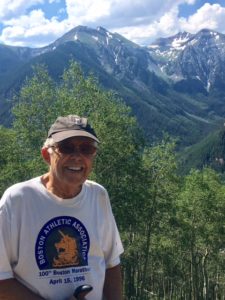
Have you heard of the Blue Zones? These seemingly disconnected regions around the world have one thing in common: people not only frequently live to over 100, but they do so while staying happy and healthy. The scientist in me is eager to learn more about this interesting phenomenon. The 81-year-old man in me wants to know exactly what is at the root of this amazing level of living. After all, I can certainly think of plenty of adventures to fill the next 20 years of life, and it’s a good bet you can too. The Blue Zones just may teach us something about living longer, better.
Where are the Blue Zones?
Five areas in the world have been dubbed “Blue Zones.” The archipelago of Okinawa, Japan, known as the “Land of Immortals” is a Blue Zone. The small island of Ikaria, Greece, is another as is Sardinia in the Mediterranean nicknamed “Place Where People Live the Longest in the World.” The Nicoya Peninsula of Costa Rica and the Southern California city of Loma Linda, which is home to a high number of Seventh Day Adventists, also made the Blue Zones list.
What is the Blue Zone secret for aging well?
At BlueZones.com, best-selling author Dan Buettner describes nine factors that people who age well in the Blue Zones have in common. Here’s a quick summary:
1. They stay active.
The world’s oldest people have daily lives with built-in activities such as walking or gardening, and their environment encourages movement.
2. They have purpose.
A sense of purpose is essential for health. Okinawans call it “ikigai,” while people from the Nicoya Peninsula call it “plan de vida.” Both translate to “why I wake up in the morning.”
3. They regularly de-stress.

Okinawans take a few moments every day to recall their ancestors, Adventists take time to pray, Ikarians take a nap, and Sardinians enjoy happy hour. Each of these regular habits works to decrease the daily stress that can lead to chronic inflammation, accelerate aging, and increase the risk for diabetes, heart disease and other chronic diseases.
4. They follow the “80 Percent Rule.”
People in the Blue Zones eat their largest meal earlier in the day, their smallest meal in the late afternoon or early evening and then don’t eat after that. Okinawans even have a centuries-old phrase that they say before meals: “Hara hachi bu.” This mealtime reminder helps them remember to stop eating when they are 80 percent full.
5. They eat a nutrient-dense, plant-based diet.

Plants are a cornerstone of the Blue Zones diet. The powerful impact plants have on human health is a topic that my friend and colleague at the Nutrilite Health Institute, Keith Randolph, PhD, has been focusing on for years.
In his May 2017 article published in the European Journal of Nutrition, Dr. Randolph provides keen insight into how nutrition fuels the oldest old in Okinawa.
The traditional Okinawa diet, he explains, is calorie poor, yet nutritional dense. Although it is similar in many ways to the Japanese diet — rich in veggies, soy products, seafood and seaweeds and low in fats, oils and dairy — the staple food differs, and that difference is telling.
Instead of polished white rice, sweet potatoes in a rainbow of colors are a staple for Okinawans. Nutrition experts often rank the sweet potato as one of the healthiest vegetables. They are nutrient dense, providing a good source of dietary fiber and protein, antioxidant vitamins A and C, and minerals such as potassium, iron and calcium. Plus, sweet potatoes are essentially devoid of saturated fat and sodium and free of cholesterol, all nutrients of public health concern. Like other sweet potatoes, Okinawan sweet potatoes are also a source of naturally occurring plant compounds like sporamin with potent antioxidant and anti-inflammatory properties that may directly contribute to healthy aging.
6. If they drink alcohol, it is in moderation.
People living in the Blue Zones, with the exception of Seventh Day Adventists, drink alcohol. The key is they drink in moderation — about 1-2 drinks per day — and enjoy it with friends and or with food.
7. They are part of a faith-based community.
Almost all of the centenarians living in the Blue Zones report belonging to a faith-based community. Those who attend services a few times a month are reported to add years of life expectancy.
8. They put family first.
Strong family connections are central to healthy aging in the Blue Zones where neighborhoods and towns are designed to allow people of all ages to live near one another. Parents tend to stay together and focus on raising children in a nurturing environment. As parents and grandparents age, they stay close to or in the home and remain active, connected and involved in family events.
9. They have deep social connections.
In Okinawa, a child stays connected with friends through their entire life, experiencing the joys and sorrows of life together. These groups, known as “moais” include five friends who were either born at a similar time or who have chosen to commit to each other for life.
Looking for more information?
What is especially fascinating to me is that these nine factors are firmly anchored in diet and lifestyle. Not medical care. Not drugs. Not extraordinary efforts. If the Blue Zones teach us anything, they confirm that a healthy diet and lifestyle is the cornerstone of healthy aging, and it is within everyone’s reach.
For more information, I encourage you to check out the Blue Zones website. If you prefer to read a good book, one of my favorites is The Blue Zones Solution: Eating and Living Like the World’s Healthiest People, 2015.
In an upcoming post, I’ll be sharing some groundbreaking research that the Amway Nutrilite Health Institute is involved in on this very topic. Stay tuned.
Till then, hara hachi bu!
P.S. Don’t forget to subscribe to our RSS feed and have blog posts delivered right to your inbox.

Awesome Sam! Thanks for the great article! You’re an incredible example of healthy living and all of the benefits. Pia
Muchas gracias Sam por existir ser ejemplo de vida para nuestras familias y las que vienen Dios Bendiga siempre su vida.
I love this, Sam! xoxo
Well you and Francesca are shining examples of good, healthy living! <3
Great info. Thank you for sharing.
Good stuff Sam. Thanks for sharing. It’s hard to believe you are 81!